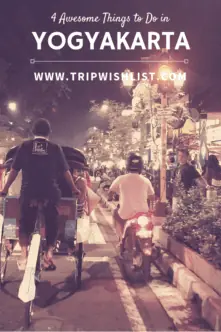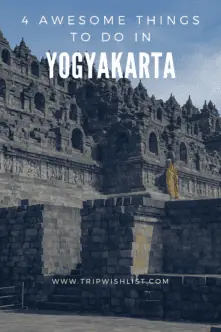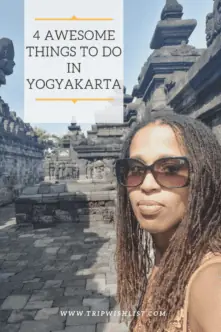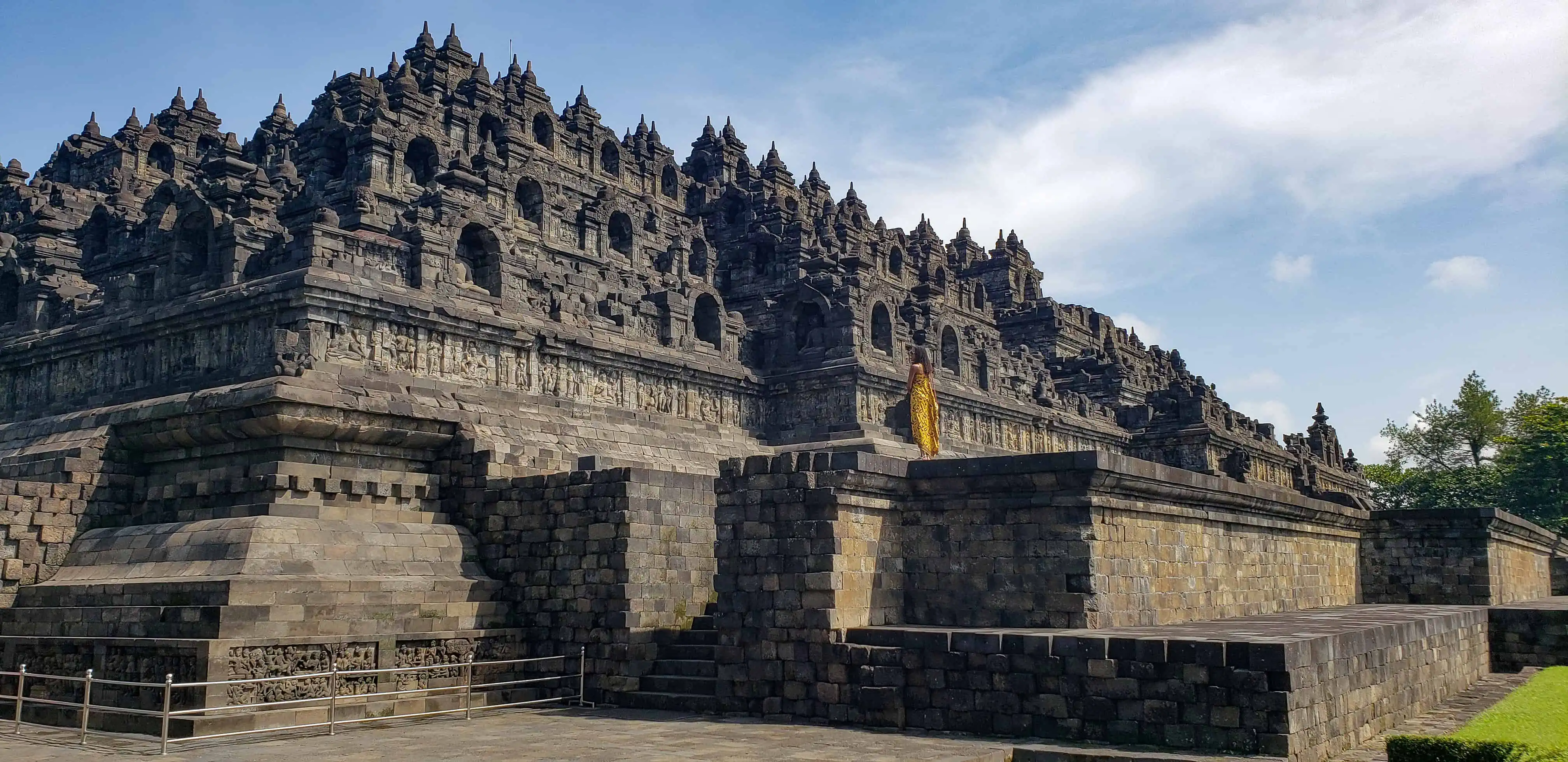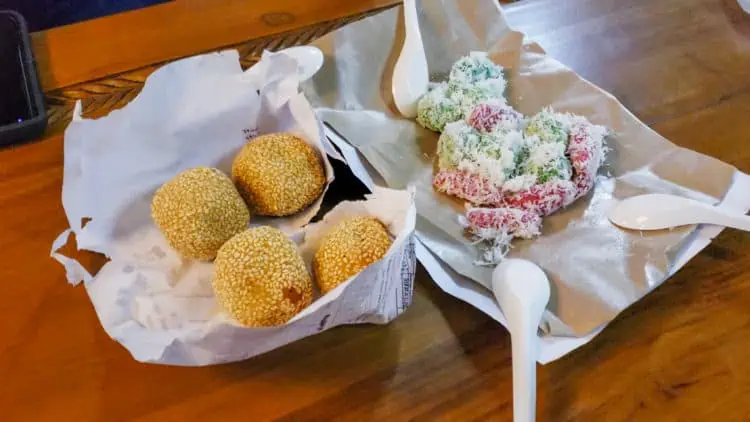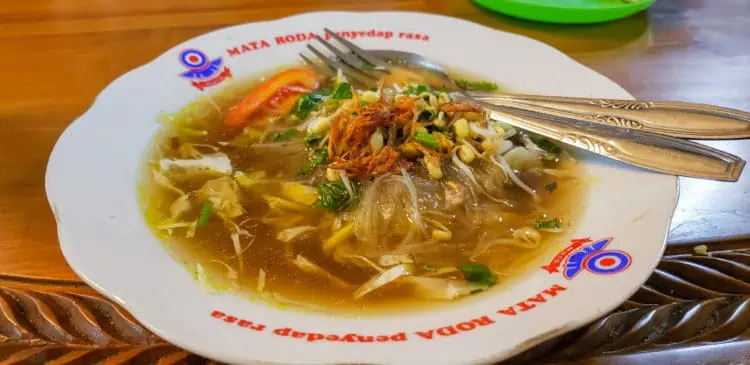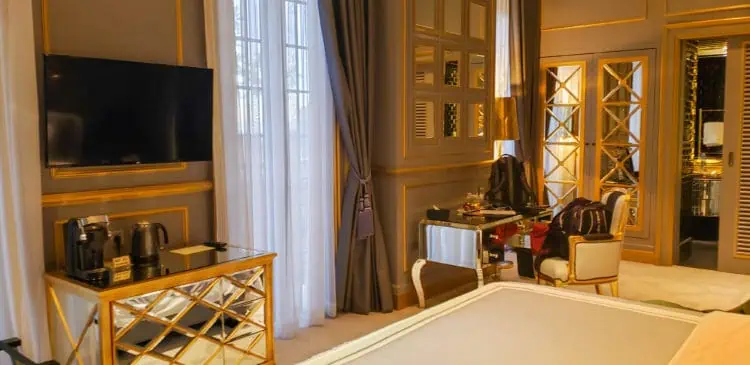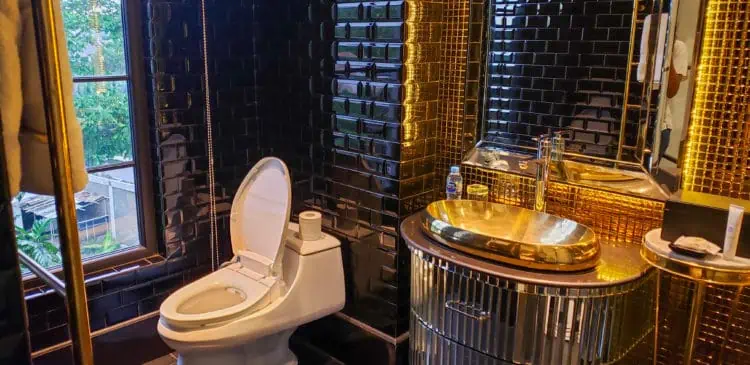Yogyakarta, often abbreviated Jogla, is a thriving city filled with bustling streets, abundant pedicabs, colorful markets, ancient temples, and dramatic peaks. You don’t have to spend a lot of time here to be immersed in the culture, and here are 4 awesome things to do in Yogyakarta!
Located in an autonomous region of nearly 3.5 million people in Central Java, the majority of tourists to the region are actually Indonesian (5 million Indonesians versus 400,000 foreigners per year).
This means that, except for your hotel, you’ll interact with relatively few foreigners when visiting Jogla. Regardless, like any other place, there are several key things that every visitor should see and do.
Borobudur Temple
Walking through this peaceful 9th-century Buddhist temple left me feeling like I could ascend to the heavens. The symmetry, symbolism, and ever-changing contrast between light and dark strike a harmonious balance between architecture and spirituality.
Shaped like a mandala, a sacred geometric symbol representing the universe, the temple contains nine stacked platforms, including six square platforms of descending size, and three circular ones.
The temple is also adorned with numerous Buddhas and stupas, a monumental stupa at the top, and more than 2,000 Buddhist reliefs, with each platform containing reliefs that represent a different level of cosmology in Buddhism.
While visiting the temple, I learned that Buddhists practice circumambulation, which is the act of traveling around an object of veneration. It must be done by walking in a clockwise direction, keeping the object to the right.
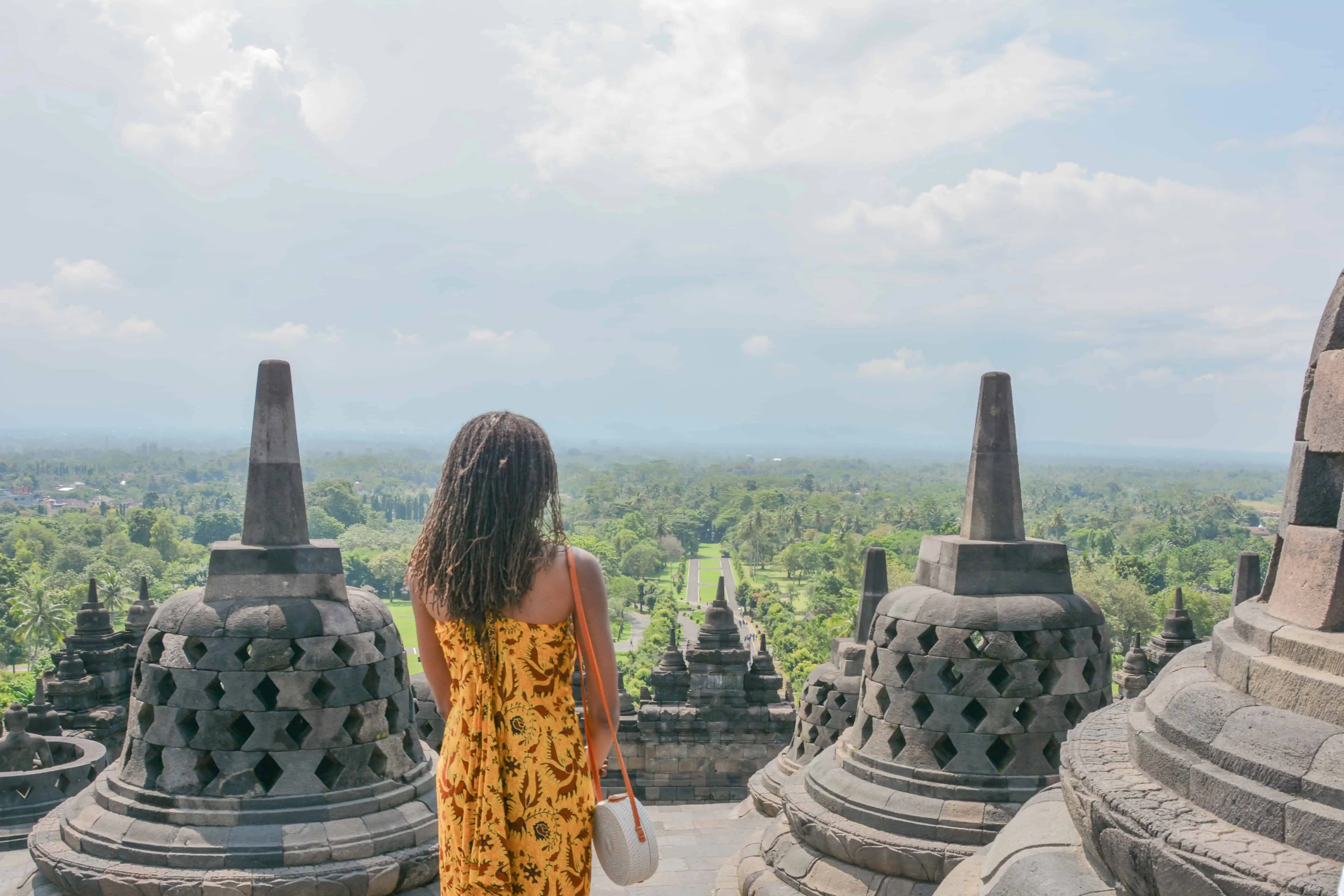
At Borobudur, the act of circumambulation embodies the path of enlightenment, as the nine levels at Borobudur represent the nine steps to reach nirvana.
Not surprisingly, Borobudur is the most visited tourist attraction in Indonesia. While there, I saw several school groups, including these school girls from Central Java who were eager to take a picture with me.
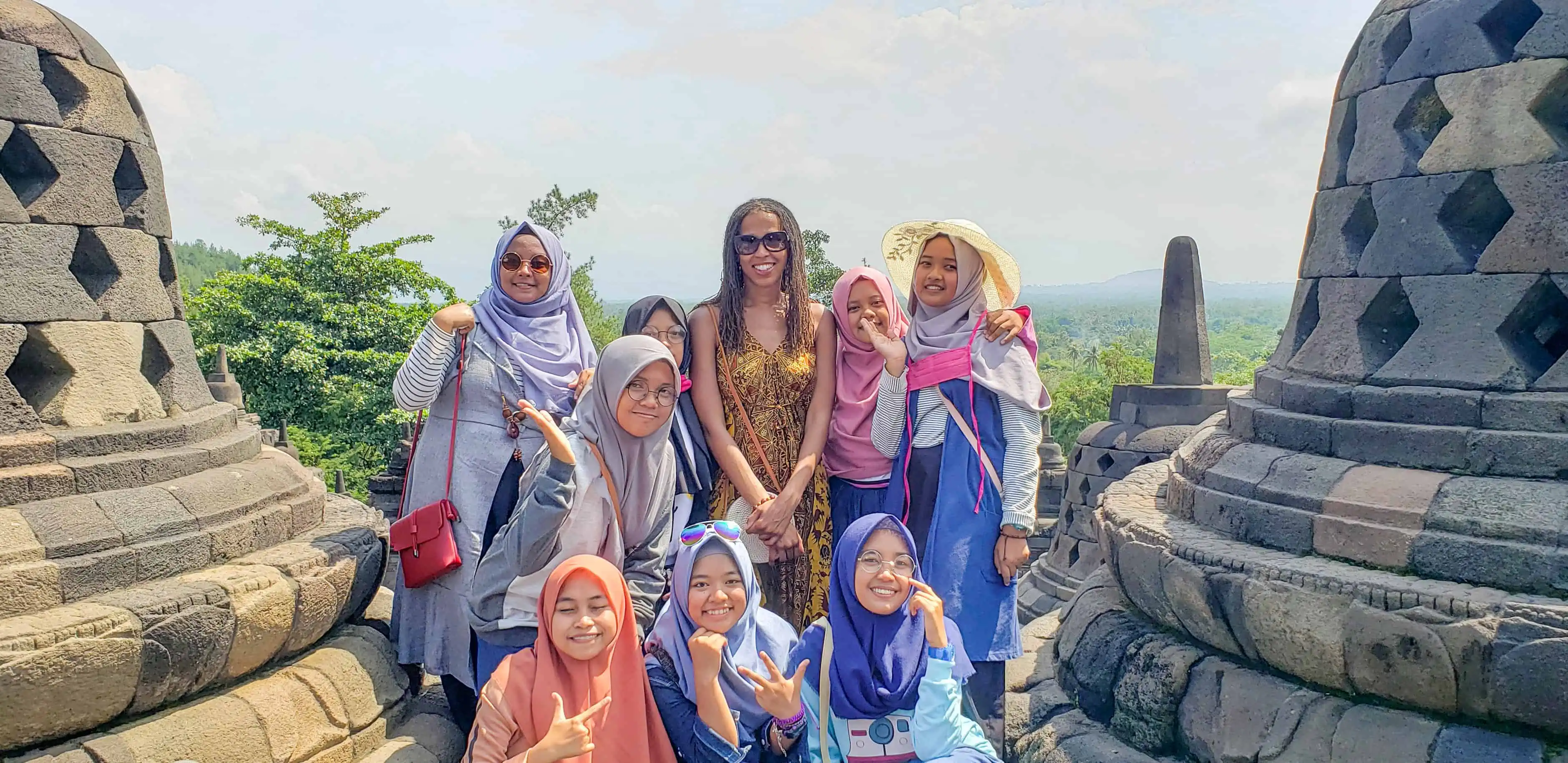
Prambanan Temple
Given that there are two amazing temples in relatively close proximity, I also visited Prambanan temple, another UNESCO World Heritage site.
Built in the 9th century, Prambanan, is the largest Hindu temple site in Indonesia, attracting more than a million visitors per year.
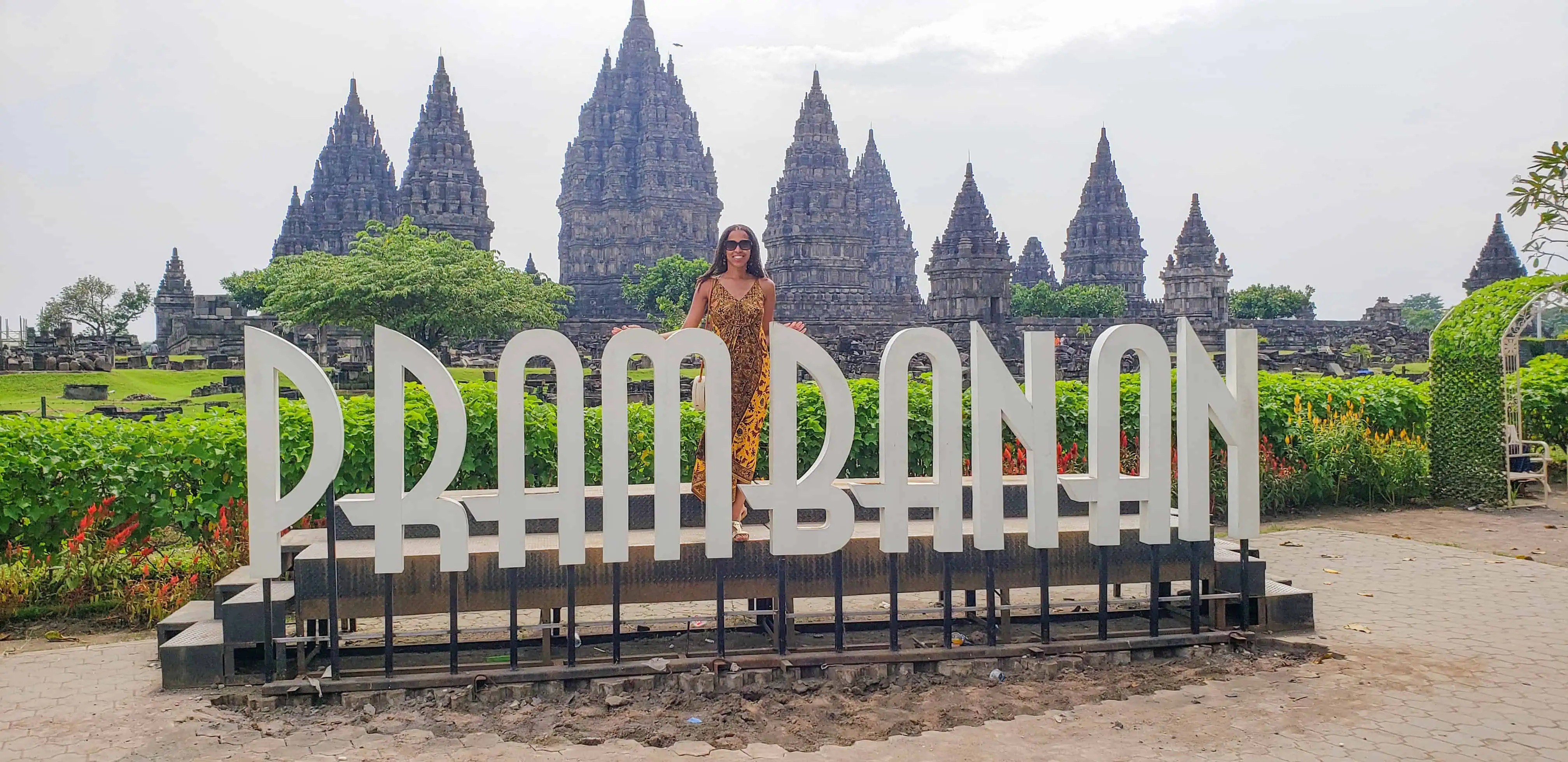
Prambanan is dedicated to the Hindu Trimurti (e.g., Brahma, Vishnu, and Shiva) and its architecture is based on the Vastu Shastra, a traditional Hindu system of architecture which literally translates to “science of architecture.” The design, layout, spatial geometry, and grandeur reminded me of Angkor Wat in Cambodia.
Once home to more than 200 temples, Prambanan went into decline due to power struggles, the eruption of Mt. Merapi, and an earthquake, and it was eventually abandoned.
However, in the 1800s, interest in the temple renewed, and restoration efforts continue to this day. The government is committed to restoring parts of the temple where at least 75% of the masonry can be found.
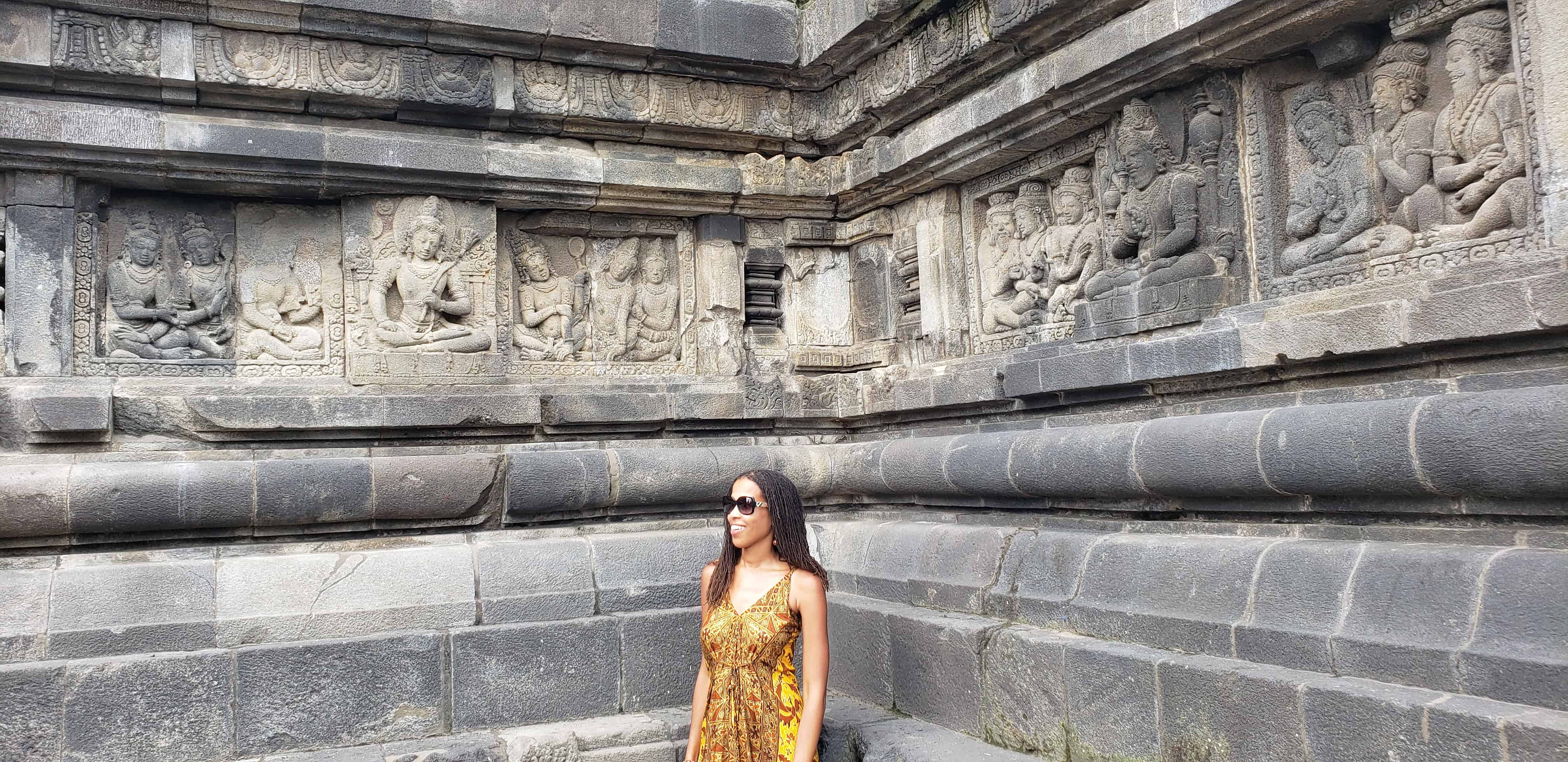
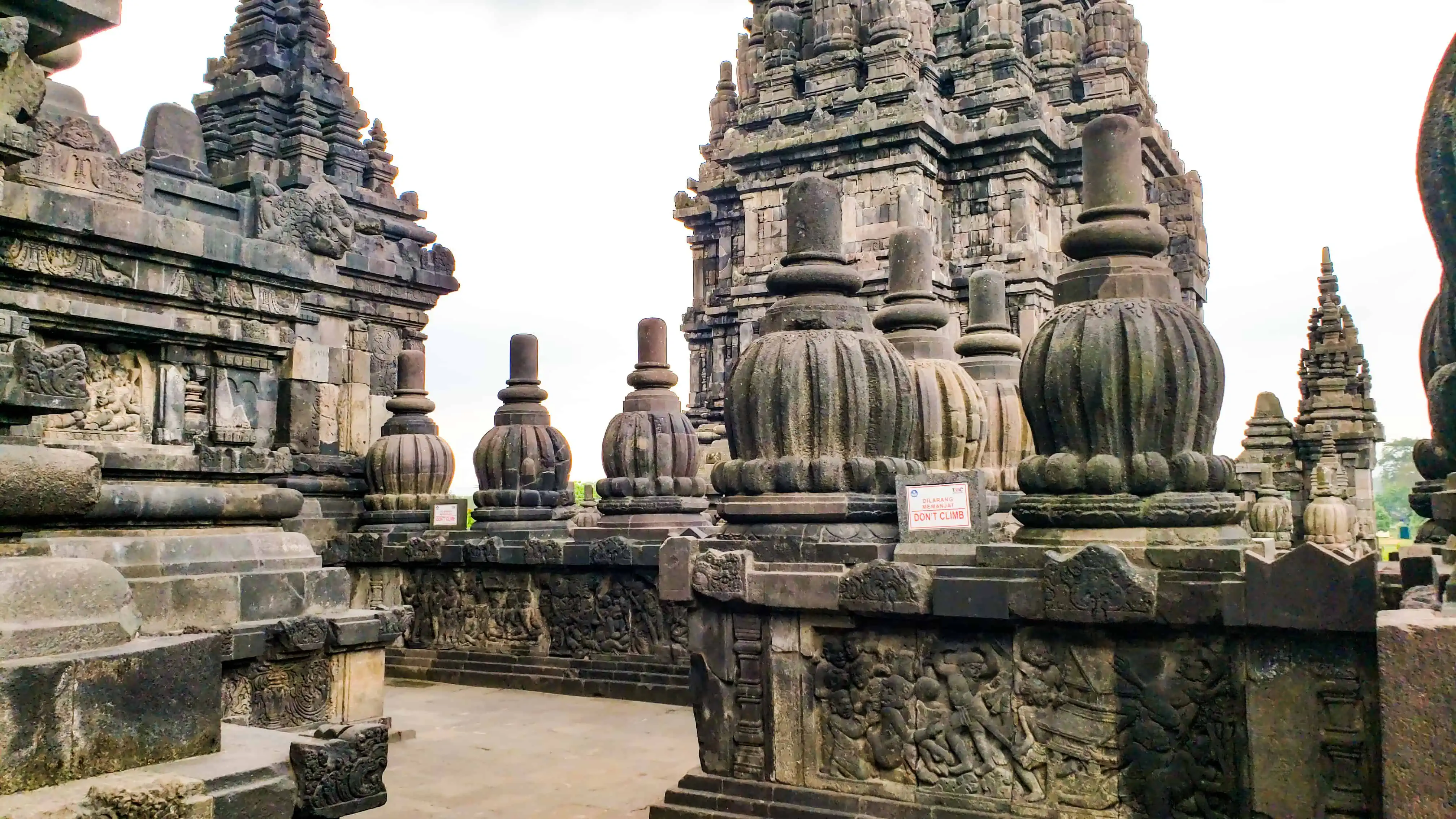
Shopping on Malioboro Street
Indonesia is one of the world’s largest exporters of textiles and garments, so it’s no surprise that there are numerous markets and places to shop.
The main artery and shopping street of the city, Malioboro Street, or Jalan Malioboro, has always played an important role in the city due to being the location of the seat of the Dutch government and the site of battles for independence during the colonial era.
It’s full of activity any time of day!
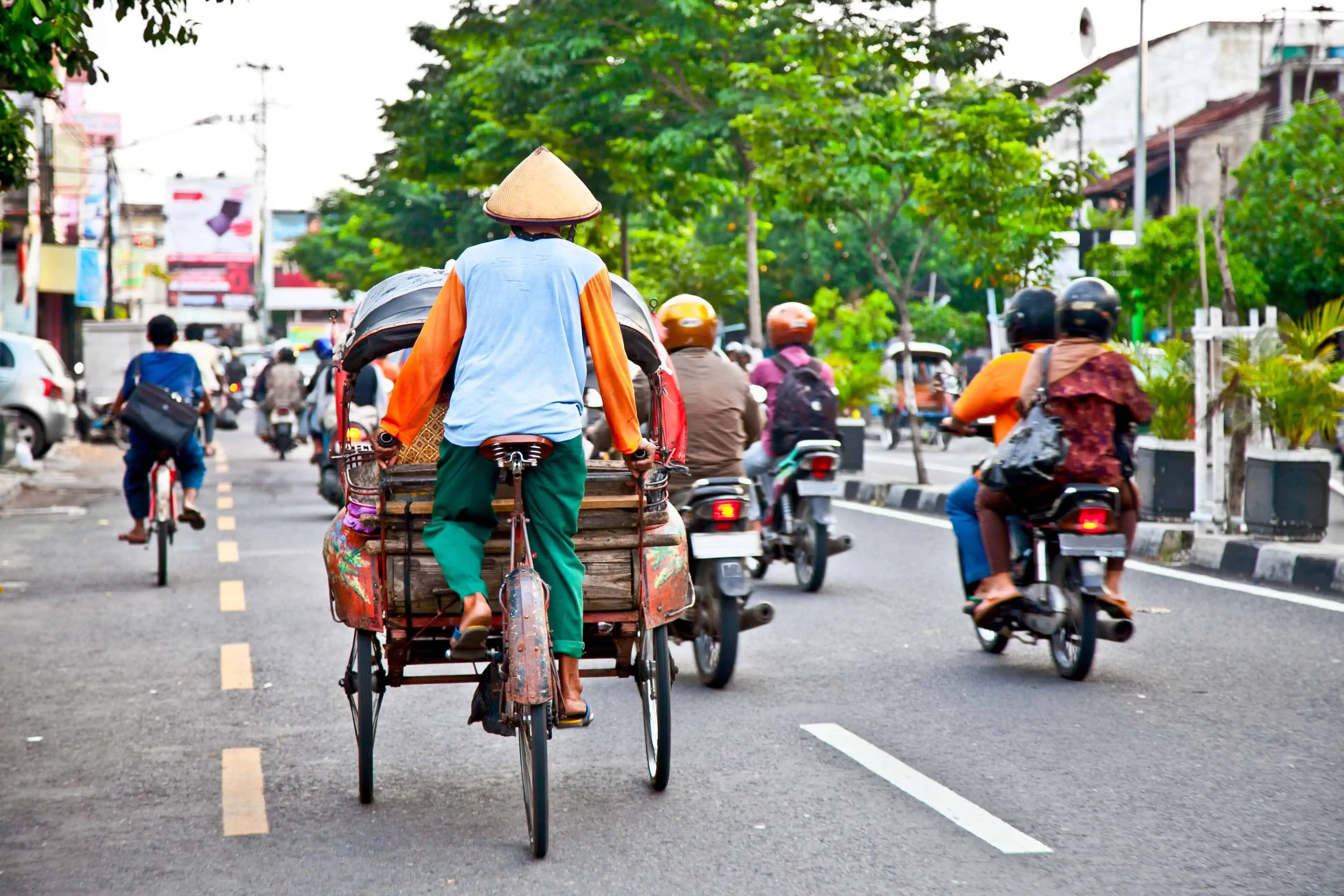
One must-visit place to shop is Beringharjo Market, a busy marketplace where you’ll find everything from food to art.
Shop for beautiful Kasongan pottery, which uses methods from the Kasongan Village dating back to the 1600s, and batik goods, which are dyed textiles with designs produced by applying wax to the parts to be left undyed.
Other Indonesian-made items to buy include leather goods, silver jewelry, Golek and Kulit puppets, and chocolate products, since Indonesia is the third largest producer of cocoa in the world.
One brand, Monggo, produces delicious chocolate products sourced from Javanese and Sumatran cocoa beans. I had a really tasty chocolate Monggo bar with mango filling. I had no choice but to try, since it contained two of my favorite foods!
Night Food Tour with Bling-Bling Cars
One of the most fun things to do in Yogyakarta is to take a night street food tour. With Angelina as my guide, I visited several local spots where I got the chance to sample a variety of Indonesian foods. It was certainly a lot of food, so go hungry!
Related post: 5 Amazing Foods You Can’t Eat Enough of in Bali
First stop: Angkringan
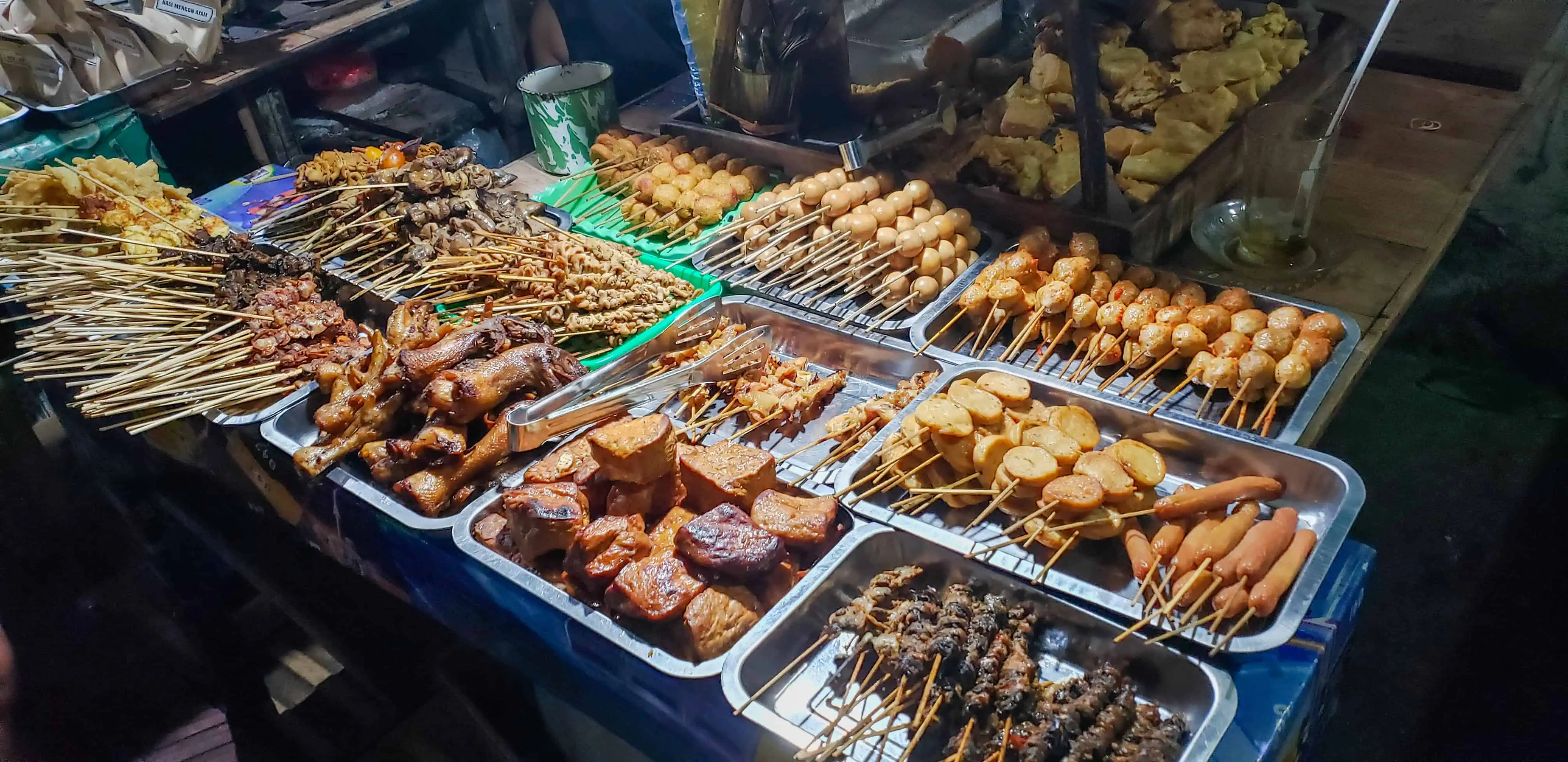
The first stop was an angkringan, a typical outdoor Javanese food stall, in the heart of the hustle and bustle of Jogla. The angkringan had a modest eating area with tables and chairs and many local foods for sale, including nasi kucing (cat rice) with salty fish sambal, scallops, chicken satay (sate ayam) with peanut sause, fried tempeh, and fish cakes. I tried rice, satay, tempeh, and to drink, some charcoal coffee.
The most unique coffee I have tried thus far, charcoal coffee or kopi joss, is coffee with a piece of hot charcoal immersed in it.
After a minute, you remove the charcoal, give it a stir, and drink. Apparently, charcoal coffee is like Red Bull x 10, so you should only drink a glass if you REALLY need to stay awake.
Second stop: Beringharjo Market
After eating at the angrkingan, we visited Beringharjo Market for fried bread with mung bean filling as well as cenil, a traditional Javanese cake made of grated cassava, coconut milk, and agar agar, and klepon, a rice pastry filled with liquid palm sugar and coated in grated coconut.
I also had soto! Similar to Vietnamese pho, this Javanese dish contained rice noodles, ginger, lemongrass, garlic, onion, chicken, celery, and herbs and spices. It was my absolute favorite!!!
Third stop: Gudeg restaurant
We visited a Gudeg restaurant, where I tried a Javanese meal made of stewed, unripe jack fruit, rice, chicken, egg, and tempeh and tofu seasoned with sambal. It tasted like home cooking, and that taste of somebody’s home cooking is why I love eating in local places abroad.
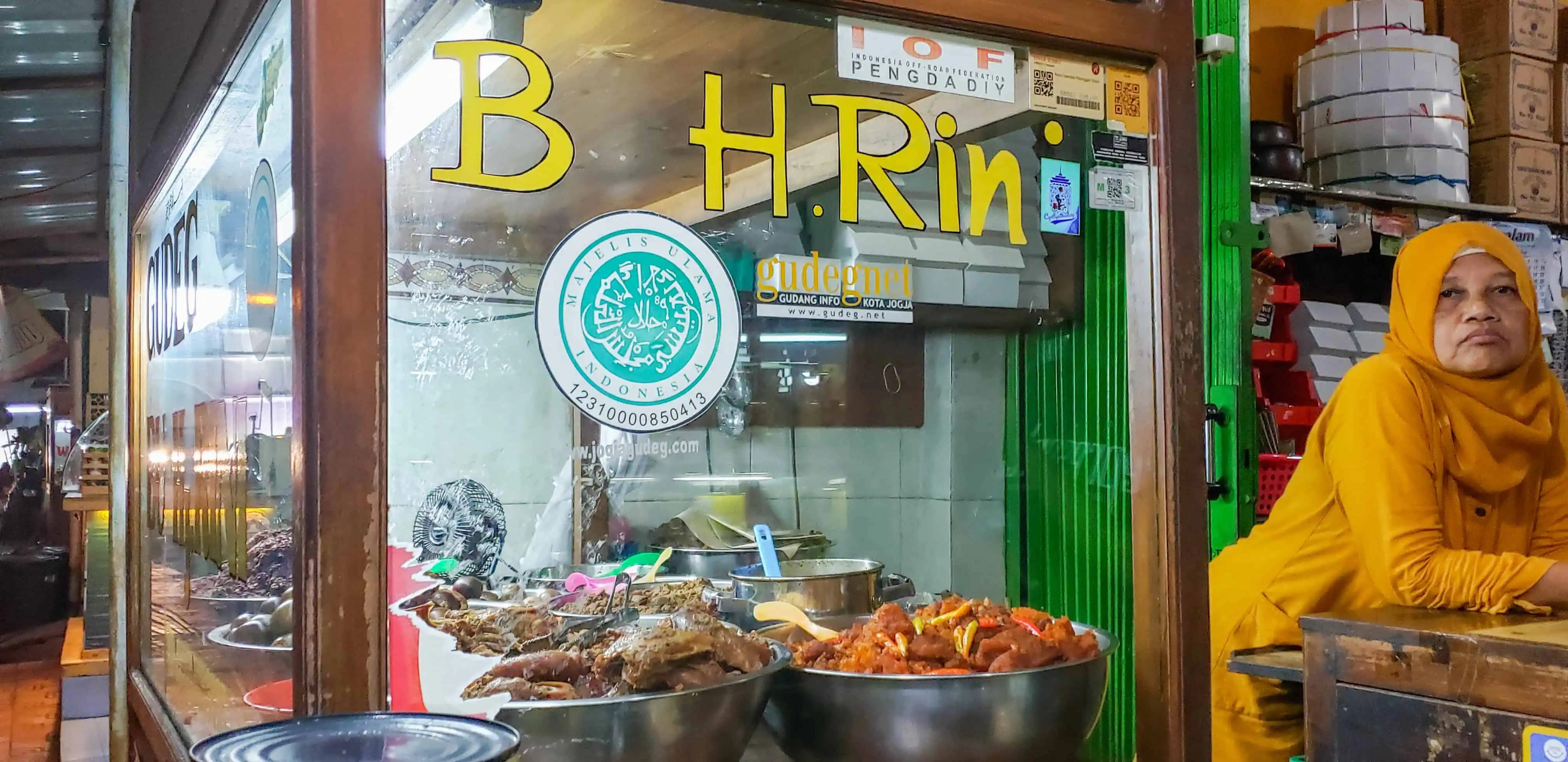
Fourth stop: Alun-Alun Selatan
Alun-Alun Selatan is a square park where people hang out and drive the bling-bling cars, which are old Volkswagons that have been transformed into pedal-operated vehicles with neon lights and sound systems.
It’s a really cool vibe for congregating outside at night to eat, socialize, play music, and have fun.
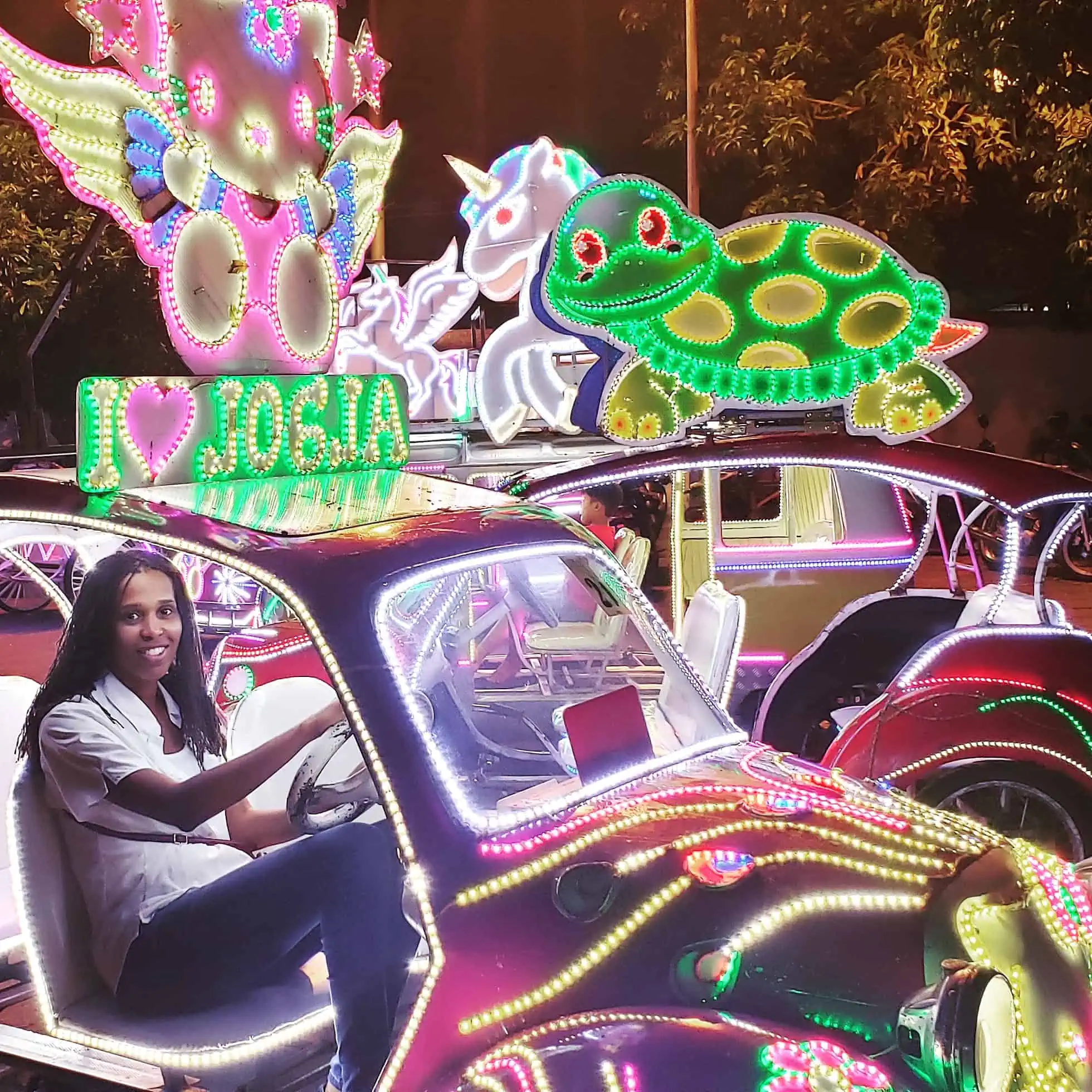
After pedaling around the square, we stopped at a food stall for wedang ronde, a dessert made from coconut jelly, ginger, peanuts and rice balls. It was like a dessert soup, and the ginger gave it a nice warm, spicy flavor.
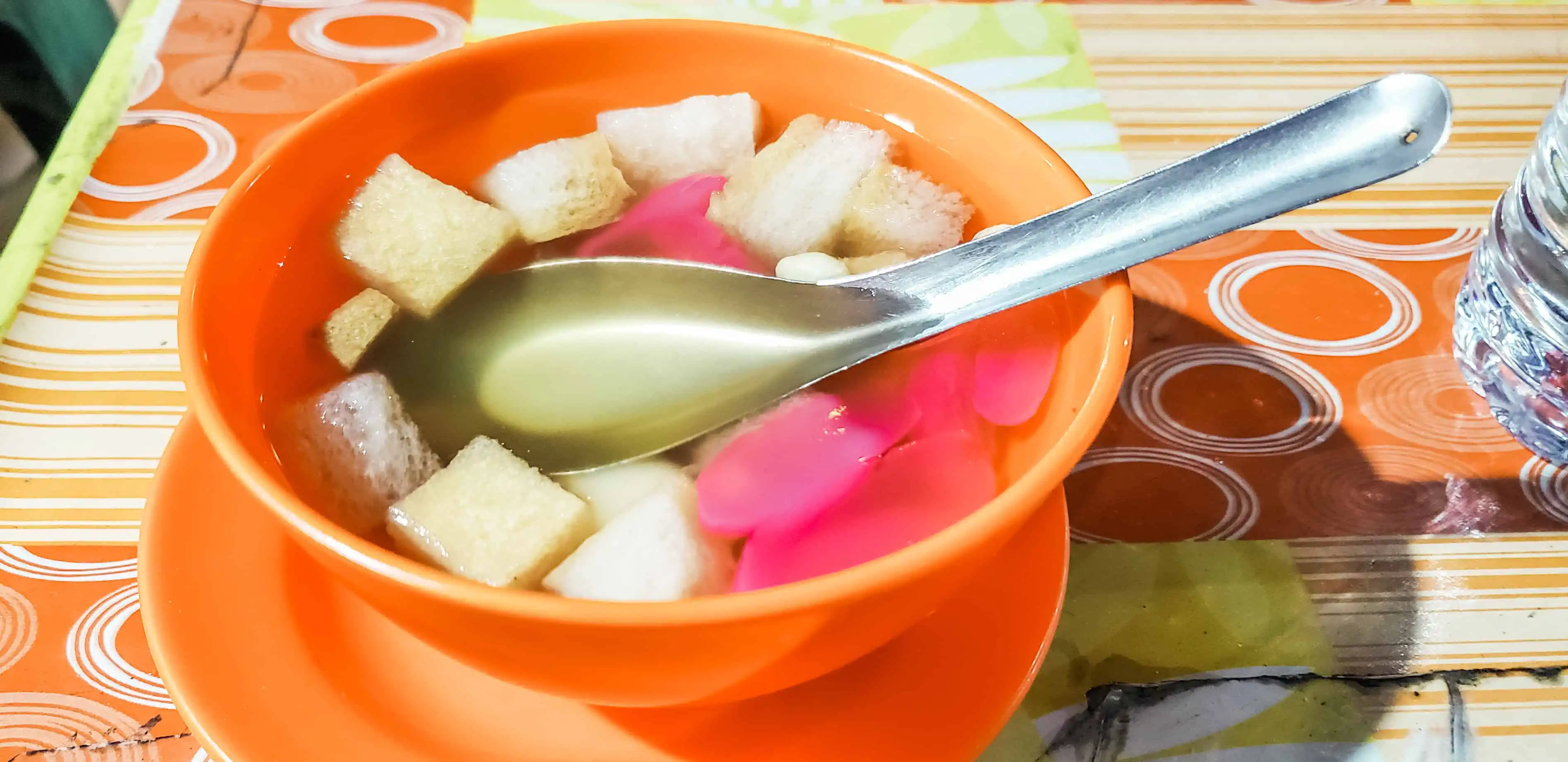
Where to Stay
There are a number of beautiful hotels to choose when visiting Jogla. I opted for the Sofia Boutique Residence, a modern colonial-style hotel located outside the main district that was super chic and super affordable.
Other hotels to consider are The Phoenix Hotel and Gallery Prawirotaman Hotel, Yogyakarta Marriott, Hyatt Regency Yogyakarta, and Sheraton Mustika Resort & Spa.
Yogyakarta is one of many places in Indonesia you should visit. Not only does it offer a lively city, beautiful temples, and wonderful food, but also, it offers a real contrast between the less touristed Muslim parts of Indonesia and Bali, the popular Hindu part of Indonesia. I hope to return one day and visit nearby places like Mt. Merapi and Jomblang Cave.
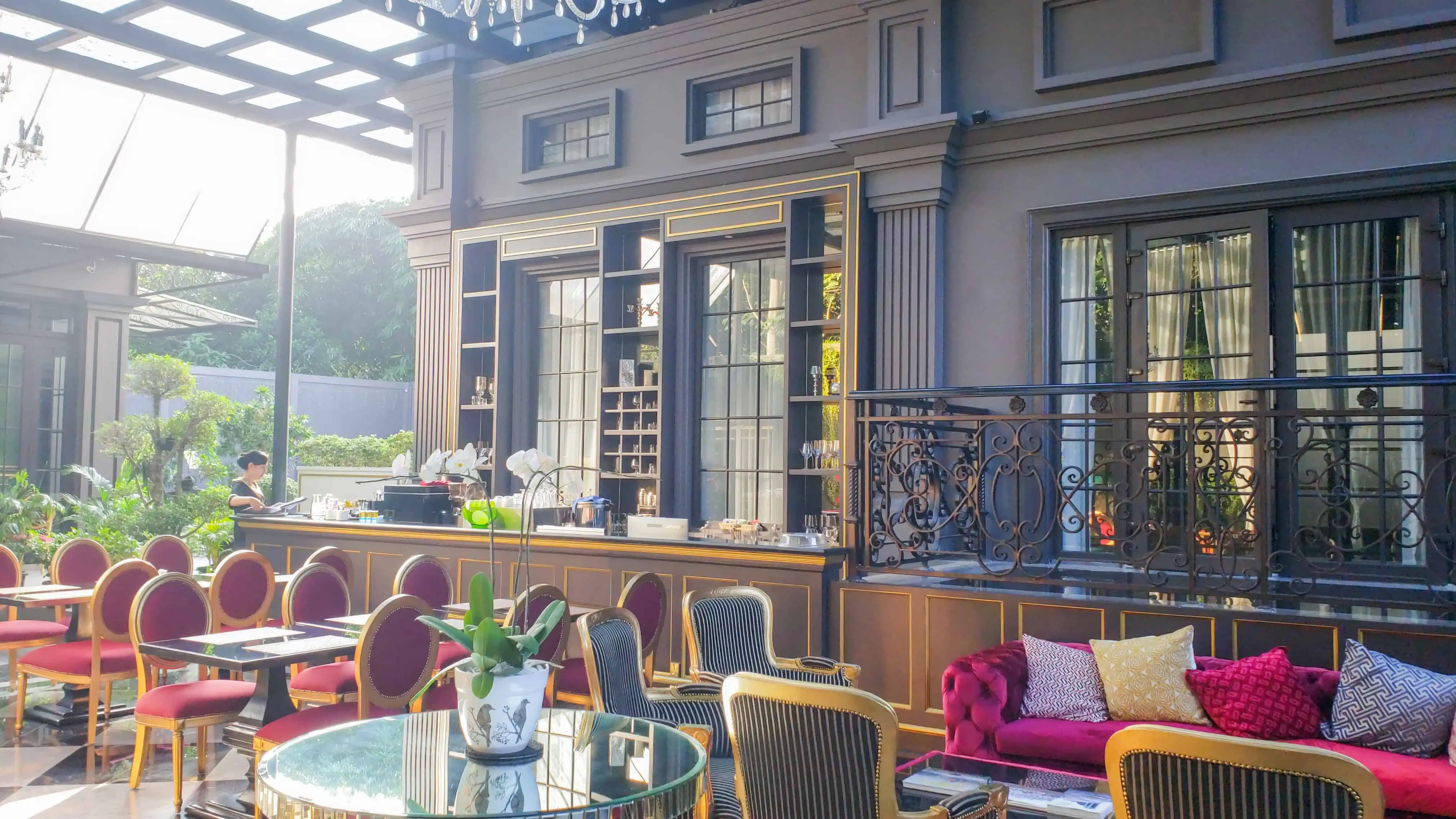
Have you visited the city? If so, what things did you do in Yogyakarta?
This post may contain affiliate links, which means we may receive a commission if you click a link and purchase something that we have recommended. Clicking these links won’t cost you any extra money. All opinions remain our own.
